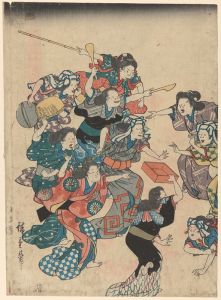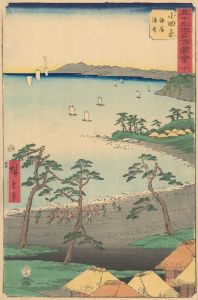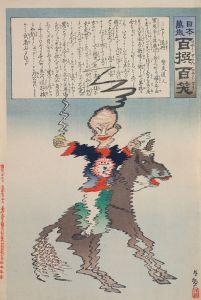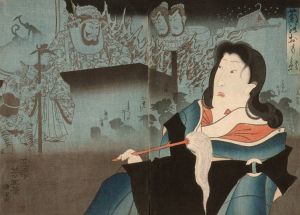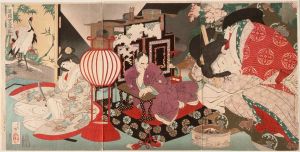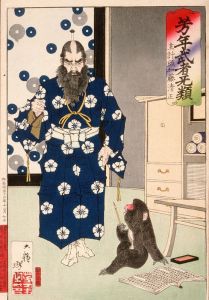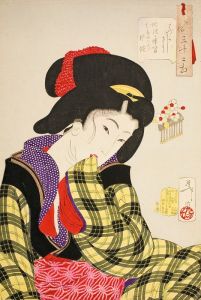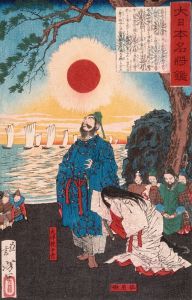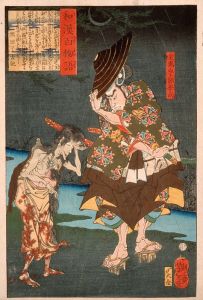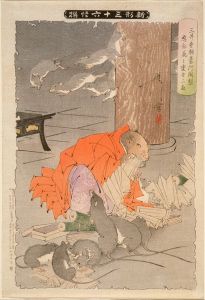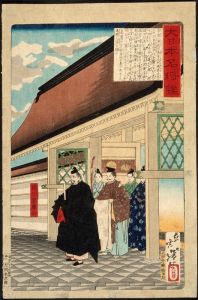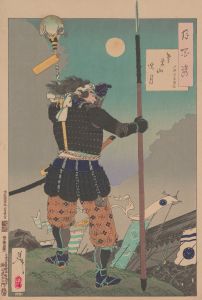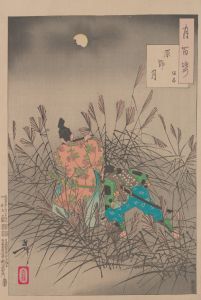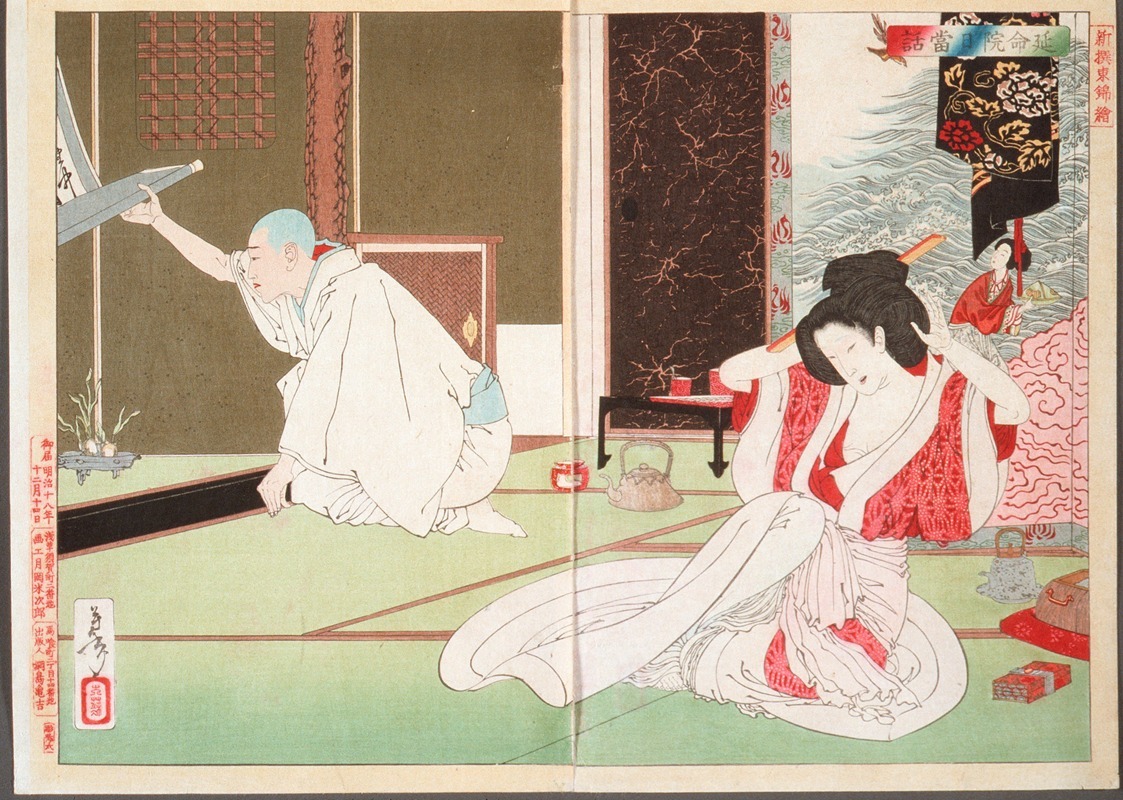
The Story of Priest Nittō at Emmeiin
A hand-painted replica of Tsukioka Yoshitoshi’s masterpiece The Story of Priest Nittō at Emmeiin, meticulously crafted by professional artists to capture the true essence of the original. Each piece is created with museum-quality canvas and rare mineral pigments, carefully painted by experienced artists with delicate brushstrokes and rich, layered colors to perfectly recreate the texture of the original artwork. Unlike machine-printed reproductions, this hand-painted version brings the painting to life, infused with the artist’s emotions and skill in every stroke. Whether for personal collection or home decoration, it instantly elevates the artistic atmosphere of any space.
"The Story of Priest Nittō at Emmeiin" is a woodblock print by the renowned Japanese artist Tsukioka Yoshitoshi, a prominent figure in the ukiyo-e art movement during the late Edo and early Meiji periods. Yoshitoshi is celebrated for his innovative approach to traditional woodblock printing and his ability to capture the complexities of human emotion and historical narratives.
This particular work is part of Yoshitoshi's series "New Forms of Thirty-Six Ghosts" (Shinkei Sanjūrokkaisen), which was published between 1889 and 1892. The series is known for its exploration of supernatural themes and ghostly tales, drawing inspiration from Japanese folklore, literature, and historical events. Each print in the series presents a unique story, often involving spirits, apparitions, or mysterious occurrences.
"The Story of Priest Nittō at Emmeiin" depicts a scene from a well-known Japanese legend. The story revolves around Priest Nittō, a Buddhist monk associated with Emmeiin, a temple in Japan. The narrative involves themes of spirituality, redemption, and the supernatural, common motifs in Yoshitoshi's work. The print captures a moment of dramatic tension, showcasing Yoshitoshi's skill in conveying emotion and atmosphere through his use of color, composition, and intricate detailing.
Yoshitoshi's work is characterized by its dynamic use of line and color, as well as its ability to convey complex narratives within a single frame. In "The Story of Priest Nittō at Emmeiin," these elements are evident in the careful rendering of the characters and the environment, which together create a vivid and engaging visual story. The print reflects Yoshitoshi's deep understanding of traditional Japanese art forms, while also incorporating elements of Western art that were becoming increasingly influential in Japan during the Meiji period.
Yoshitoshi's career was marked by a deep interest in the supernatural and the macabre, themes that are prevalent throughout his body of work. His prints often explore the boundaries between the human and the otherworldly, inviting viewers to contemplate the mysteries of life and death. "The Story of Priest Nittō at Emmeiin" is a testament to Yoshitoshi's ability to blend these themes with historical and cultural narratives, creating works that are both visually striking and intellectually engaging.
The artist's influence extends beyond his technical skill and thematic interests; he played a crucial role in the revival of the ukiyo-e tradition during a time when it was facing decline due to the modernization of Japan. Yoshitoshi's dedication to his craft and his innovative approach to storytelling have earned him a lasting legacy in the world of Japanese art.
In summary, "The Story of Priest Nittō at Emmeiin" is a significant work within Tsukioka Yoshitoshi's oeuvre, exemplifying his mastery of the woodblock print medium and his fascination with the supernatural. Through this print, Yoshitoshi invites viewers to explore a rich tapestry of legend and emotion, rendered with the precision and artistry that define his contributions to the ukiyo-e tradition.





